Genetically engineered crops could grow lace amongst their roots
Plants could be genetically engineered to produce textiles at the same time as food, according to this synthetic biology project by designer and researcher Carole Collet.
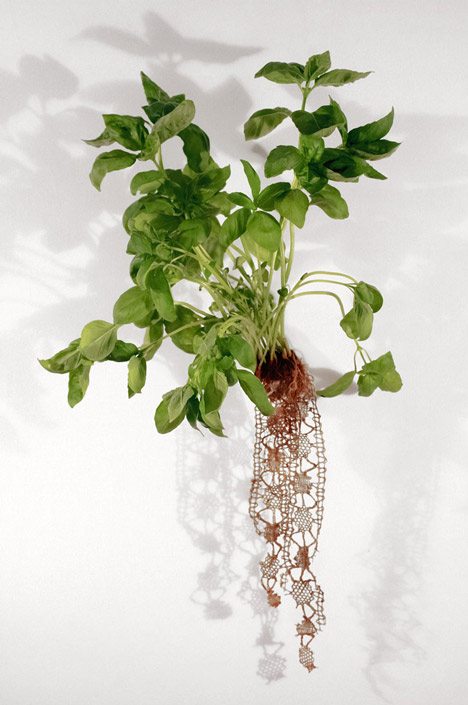
"Would you eat a vitamin-rich black strawberry from a plant that has also produced your little black dress?" questioned Collet, whose Biolace concept responds to the need to produce enough food and textiles for the world's rapidly expanding population by proposing that the DNA of plants could be adapted so they produce synthetically-enhanced foods and lace-like fabrics grow from their roots.
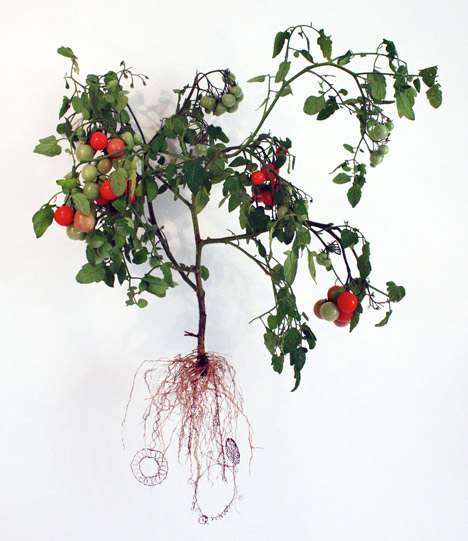
"Biolace proposes to use synthetic biology as an engineering technology to reprogram plants into multi-purpose factories," explained Collet, who is a full-time academic and deputy director of the Textile Futures Research Centre at Central Saint Martins College in London.
"Plants become living machines, simply needing sun and water to be operational. In such a scenario, we would harvest fruits and fabrics at the same time from the same plants."
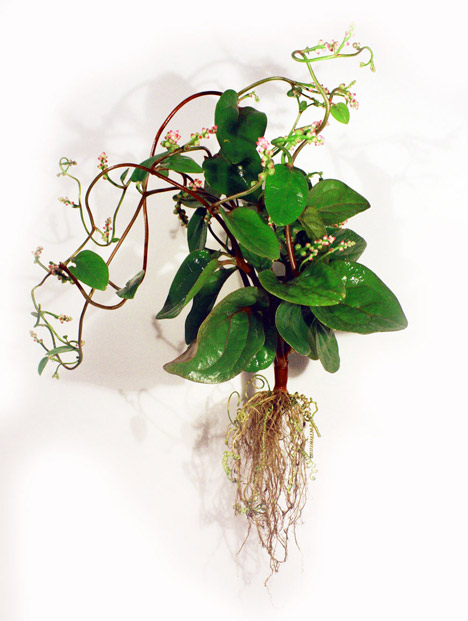
Collet believes that by 2050 advances in biological technologies could enable the "hyper-engineered" plants to be grown in huge greenhouses with their roots embedded in a mineral nutrient solution.

The project proposes four genetically-engineered plants including a tomato plant with high levels of a nutrient called lycopene that could help improve the skin's resistance to sunburn and protein-rich edible lace growing from its roots, and a basil plant that could produce anti-viral medicines as well as perfumed lace for use in decorative fashion applications.
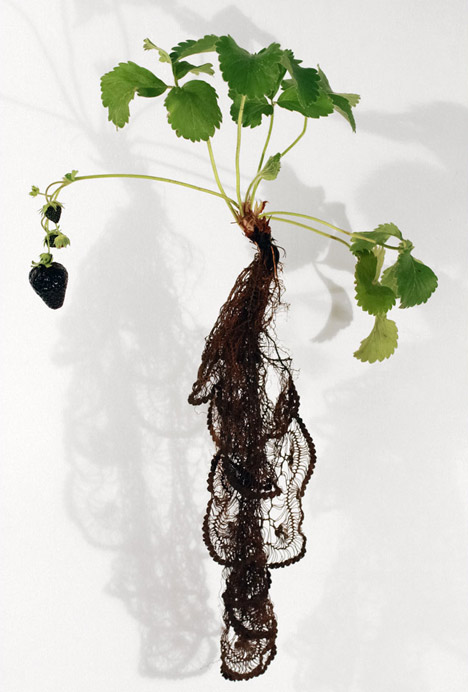
A strawberry bush with black lace growing from its roots would yield black strawberries enriched with enhanced levels of vitamin C and antioxidants, while a spinach plant could produce micro biological sensors for use in electronics at the same time as providing a multi-mineral food supplement.
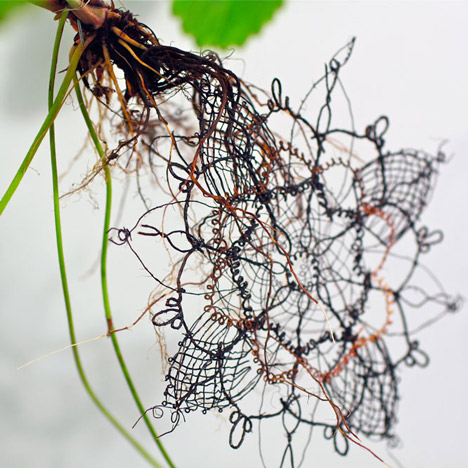
"The aim of this project is to bring to light the potential of emerging living technologies and to questions the pros and cons of such extreme genetic engineering," said Collet. "Could biological engineering promote a new kind of sustainable textile manufacturing, less reliant on chemicals and less energy-hungry than our current models of production?"
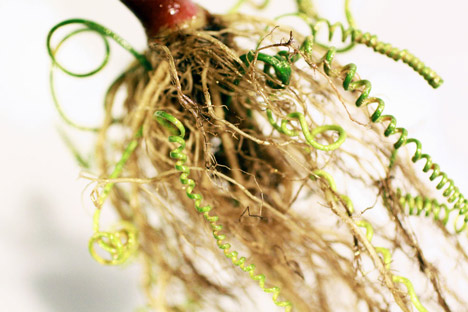
The project is presented alongside floor tiles made of snail poo plus over 50 other ideas for combining biology with art, architecture and design presented at an exhibition called Biodesign at The New Institute in Rotterdam, which continues until 5 January 2014.
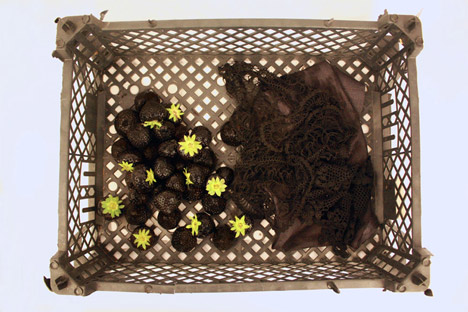
Photography is by the designer and the film is by Immatters.